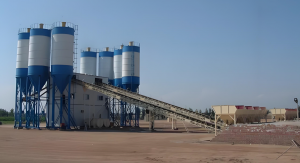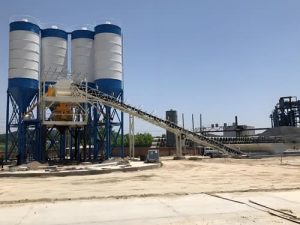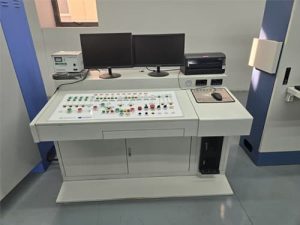Relative News
Products
The importance of concrete mixers
Concrete mixers are indispensable tools for urban construction. They play a key role in the production of building raw materials and bring many conveniences to the construction industry.
For example, the emergence of Minrui vertical planetary mixers has accelerated the development of the construction industry and improved the progress and quality of the entire project. Its adjustable and controllable mixing function, special safety control system, powerful mixing device and other designs have enhanced the production effect of the equipment, laying a good foundation for the rationalization and efficiency of the production of concrete, cement products and precast concrete.

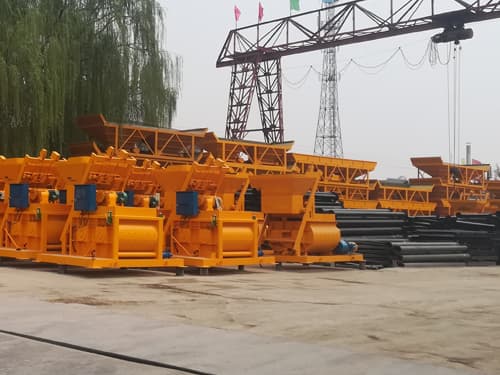
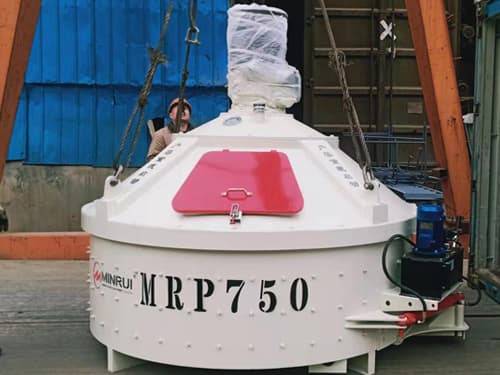
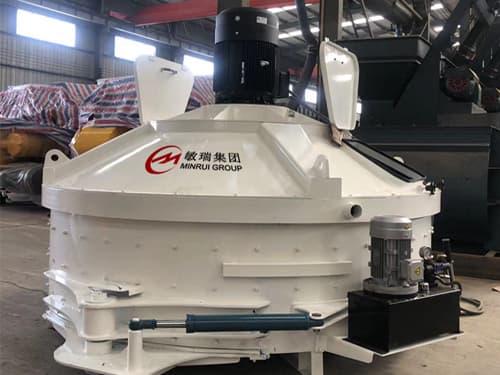
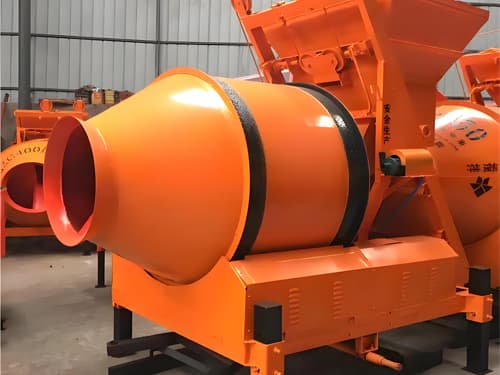

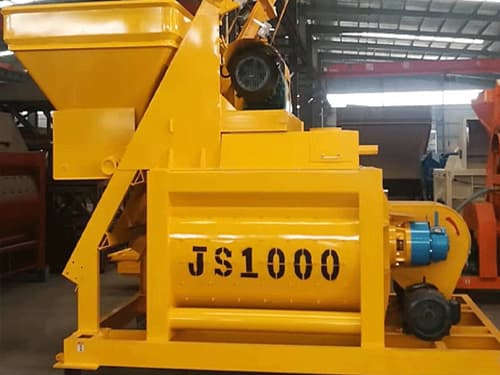
Maintenance of concrete mixers
Timely cleaning and maintenance of concrete mixers can not only extend its service life, but also improve its work efficiency.
The specific maintenance methods are as follows:
1. Appearance maintenance
Keep the concrete mixer clean. It is best to use special cleaning agents and low-alkaline soaps for special vehicles, and pay attention to frequent and real-time cleaning of the vehicle.
Pay attention to regular polishing and timely wiping of the car after rain.
For plastic parts used in the appearance of special vehicles, plastic parts painted with paint should use good cleaning agents; waxing should not be too heavy to prevent the paint from penetrating and exposing the base color.
For plated metal parts, carbon cleaner should be used when cleaning, and hard tools should not be used to scrape off dirt. Plated parts should also be waxed regularly to protect the coating from oxidation.
Pay attention to rust prevention. After the vehicle has been used for a period of time, the necessary rust prevention treatment should be carried out on the welding points, seams and abraded parts on the vehicle body
2. Parts maintenance
The concrete mixer should be set in a flat position, and the front and rear axles should be padded with square wood to raise the tires to avoid movement when starting.
Regularly check the oil, circuits and control equipment at each lubrication point, and add lubricating oil as required, maintain the cleanliness of the machine body, and remove dirt and obstacles on the machine body.
Check whether there is water in the engine oil to avoid excessive wear of the engine; check whether there is water in the gearbox to avoid wear of the gears.
In severe cold seasons, after work, the mixer drum should be cleaned with water and the accumulated water in the water pump, water tank and water pipe should be drained to avoid freezing of the water pump, water tank, water pipe, etc.13. 3. Other aspects
Pay attention to factors such as the frequency of use of special vehicles, working environment, and route length.
Prevent early damage to parts and components, avoid failures, ensure a high vehicle output rate, and extend the service life of the water truck to obtain the best economic benefits
Precautions for the use of concrete mixers
Inspection before work
1. If the concrete mixer is new, each system and component should be inspected and necessary test runs should be carried out in accordance with the requirements of the concrete mixer manual before use. Run the empty vehicle, check the rotation direction of the mixing drum or mixing blades, the operation and braking of each working device, and confirm that they are normal before operation.
2. The fixed mixer should be installed on a solid pedestal. When used for a long time, the anchor bolts should be buried; for short-term use, sleepers can be laid under the machine base and leveled and stabilized.
3. The mobile mixer should be installed on a flat and hard floor with square wood or a support frame, and the tires should be kept on a horizontal surface without stress. If the use time exceeds three months, the tires should be removed and properly stored, and the ends of the axles should be cleaned and rust-proofed.
4. If it is necessary to dig a pit for the loading hopper, the pit mouth should be raised and compacted to prevent ground water from flowing into the pit. The bottom support surface of the loading track frame should be compacted or paved with bricks, and the back of the frame should also be supported by wood to prevent the track from deforming during operation
Attention during work
1. After the concrete mixer is started, the mixing drum should be loaded after reaching the normal speed, and water should be added in time after loading. Before adding new materials, all the existing concrete in the mixer must be unloaded. The mixer must not be stopped midway or started at full load, except for reverse discharge.
2. Do not let sand and gravel fall into the running part of the machine to avoid jamming and damage to the running parts. After the upper hopper is lifted, no one can pass or stay under the bucket to avoid accidents caused by brake failure.
3. If a fault is found during work and it cannot continue to operate, the power supply should be cut off immediately, the concrete in the mixing drum should be cleaned, and then maintenance should be carried out.
Note after work
1. After completing the operation, the mixer should be thoroughly cleaned. If the operator needs to enter the drum for cleaning, the power must be cut off, and a special person must be assigned to supervise outside, or the fuse must be removed and the switch box locked before entering.
2. The crank handle of the upper hopper should be fixed with a pin to prevent the body from touching the crank handle and lifting the hopper when entering the drum for cleaning, causing an extrusion accident.
3. The hopper should be lowered to the hopper pit. If it needs to be raised, it should be fastened with a chain.
How to use a concrete mixer
Preparation before operation
1. Check the appearance of the mixer to ensure that there is no damage, deformation or loose parts, and check whether all accessories are intact, loose or worn.
2. Check the transmission system, including the tension and wear of the belt and chain; check the electrical system, whether the wires are damaged, whether the joints are loose, and whether the control buttons and indicator lights are normal.
3. Verify whether the power supply and wires of the mixer are normal and whether the grounding is reliable; check whether the lubricating oil of the mixer is sufficient and the oil level is normal.
4. According to the construction requirements, prepare the required raw materials such as cement, sand, gravel, water and admixtures, and ensure that their quality meets the requirements. Measure the raw materials and mix them strictly according to the mix ratio.
5. The operator should be familiar with the operating procedures and performance characteristics of the mixer, undergo professional training and obtain the corresponding operating qualification certificate, and wear personal protective equipment such as safety helmets, work clothes, gloves, etc.
Start operation
1. Confirm that the power supply voltage meets the requirements of the mixer and plug the power plug into the appropriate socket.
2. Press the start button and let the mixer idle for a few minutes to observe whether it is running normally and whether there are any abnormal sounds and vibrations.
3. Check whether the rotation direction of the mixing drum is correct, which should generally be clockwise.
4. Pour the raw materials into the mixing drum in the order of gravel first, cement second, and sand last. During the feeding process, care should be taken to avoid large pieces of material blocking the feed port, and the feeding speed should be controlled to prevent material overflow.
5. After all the raw materials have entered the mixing drum, start adding water and admixtures. When adding water, it should be even and slow to avoid water concentrating in one place, which will affect the quality of concrete.
Operation during mixing
The operator should observe the operation of the equipment at any time. If abnormal noise, vibration or other abnormal conditions are found, the machine should be stopped immediately for inspection and treatment. Constantly observe the quality of concrete. If the quality of concrete does not meet the requirements, it should be stopped and adjusted in time.
Operation after mixing
1. After mixing, the water supply system of the mixer should be turned off in time, and the power supply should be disconnected to clean the residual materials in the mixer to avoid clogging the equipment.
2. After draining the concrete in the mixer, add enough clean water to the mixer, and start the mixer for a few minutes to clean the mixer. If there is solidified concrete on the lining plate and the mixing shaft blade that cannot be washed away by water, it should be shoveled away with a shovel in time.
Safe operation
Before starting the mixer, it is necessary to check whether the power cord is well grounded, and ensure that the voltage and frequency are consistent with the rated voltage and frequency of the mixer. When operating the mixer, it is strictly forbidden to put your hands or tools into the feed port and discharge port to avoid danger. When the mixer is running, people around should keep a distance and should not stay near the mixer or operate other equipment.
In short, the correct use and maintenance of concrete mixers are of great significance to ensuring construction safety, improving construction efficiency and concrete quality.
Types of concrete mixers
In the construction field, there are many types of concrete mixers, each with different characteristics and applicable scenarios.
The following introduces several common types for you:
Classification by mixing method
Compulsory twin-shaft concrete mixer
This type of mixer summarizes the design experience at home and abroad, such as the Minrui JS1000 1m3 1000l twin-shaft compulsory concrete mixer, which contains specific design principles, main technical parameters and main components. It has a good mixing effect and can fully mix the materials. It is suitable for projects with high requirements for concrete quality.
Non-tilting cylindrical concrete mixer
Its tank body is cylindrical and cannot be tilted. It plays a role in some specific mixing operations, but its detailed information is rarely mentioned in the search results.
Classification by working mode
Batch mixer
This mixer comes in various shapes and sizes and produces a batch of concrete at a time. It is suitable for small and medium-sized construction sites, such as some modular construction sites. Different batch production capacities can select the appropriate model according to actual needs.
Continuous concrete mixer
It can run uninterruptedly and continue to produce concrete as long as it is needed. It is very suitable for large-scale construction projects and can meet the continuous demand for concrete in large-scale construction.
Classification by use and matching
Motor truck concrete mixer
It is not only a tool for transporting concrete, but also can mix concrete during transportation to ensure that the concrete still has good working performance when it is transported to the construction site. The quality and quantity of concrete mixer trucks are the guarantee of the supply capacity of concrete enterprises. At the same time, it also involves the dynamic strain test experimental research of its key parts, the stress analysis of the subframe and other aspects to ensure its reliable performance.
Mixers supporting other equipment
Concrete mixers can also be used in equipment that requires batching, such as asphalt mixture mixing equipment and metallurgical blast furnaces, to provide support for material mixing in different industrial scenarios.
